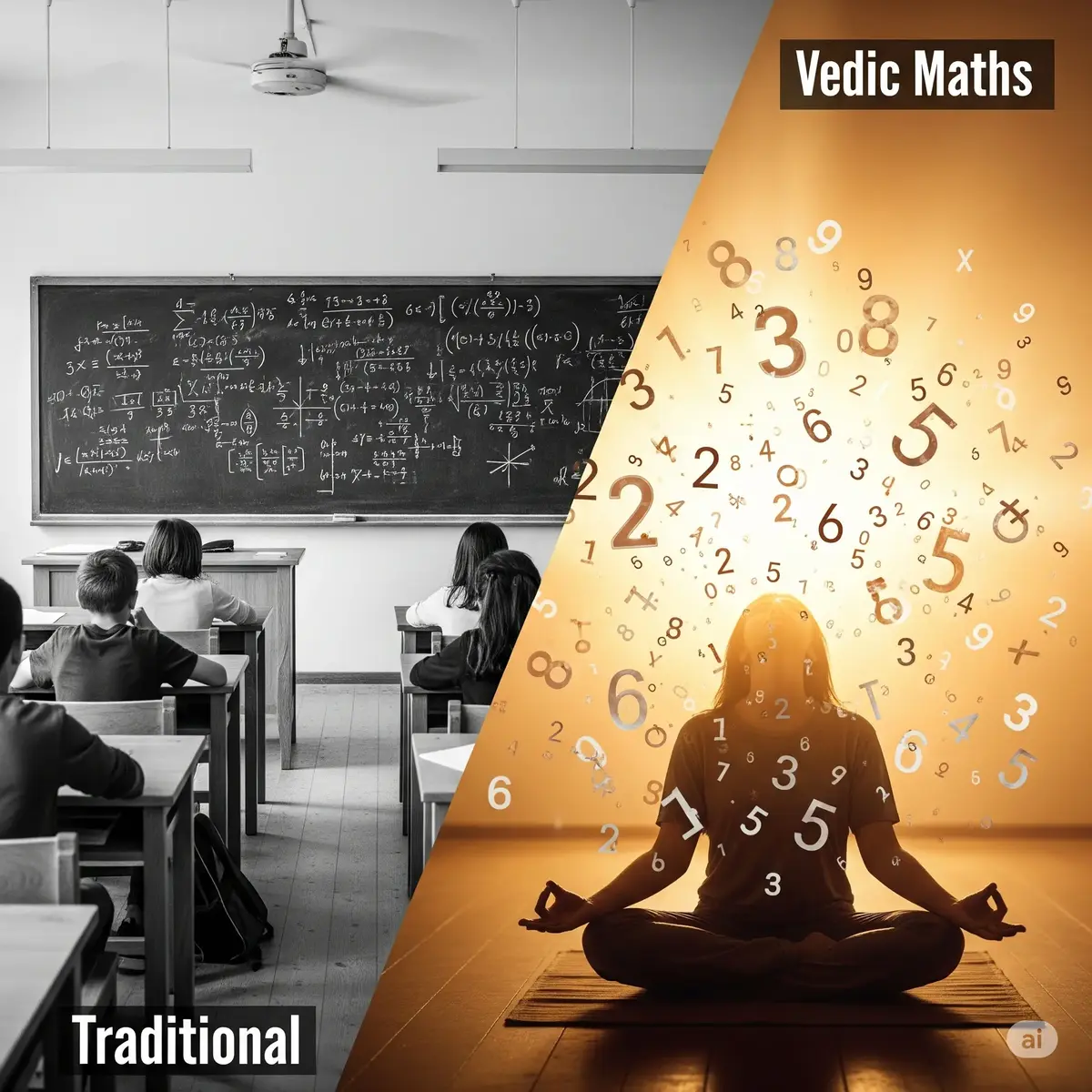Vedic Mathematics Blog Post

⚡ Quick Summary
Vedic mathematics offers calculation shortcuts that work from left to right (the way we read), while traditional methods typically work from right to left. Vedic math emphasizes mental calculation and pattern recognition, making it up to 10x faster for many types of calculations.

What You'll Learn
🧮 Introduction
Mathematics is a universal language, but the methods we use to solve mathematical problems can vary significantly.Traditional mathematics, as taught in most schools worldwide, follows a standardized approach based on established algorithms.Vedic mathematics, on the other hand, offers alternative techniques derived from ancient Indian mathematical texts.
In this comprehensive guide, we'll explore the key differences between these two approaches and discover why many students find Vedic methods to be faster and more intuitive.
📚 Origins and Philosophy
Traditional Mathematics
Traditional mathematics as taught in most schools today has evolved over centuries, incorporating contributions from various civilizations including Greek, Arabic, and European mathematical traditions. It emphasizes structured algorithms and step-by-step procedures.
Vedic Mathematics
Vedic mathematics, reconstructed by Indian mathematician Bharati Krishna Tirthaji in the early 20th century, is based on 16 sutras (formulas) and 13 sub-sutras derived from the Vedas. The philosophy emphasizes mental calculation and pattern recognition.
⚖️ Calculation Approach Comparison
| Aspect | Traditional Approach | Vedic Approach |
|---|---|---|
| Direction | Right to left | Left to right (natural reading) |
| Memorization | Tables and fixed algorithms | Patterns and relationships |
| Calculation Method | Often requires writing | Designed for mental calculation |
| Flexibility | Same method for all problems | Multiple techniques based on numbers |
| Learning Curve | Gradual, systematic | Quick pattern recognition |
🚀 Speed and Efficiency
Why Vedic Math is Faster
When multiplying numbers close to a base (like 100), Vedic techniques like"All from 9 and the last from 10"can solve problems in a single step that would take multiple steps using traditional methods.
For squaring numbers ending in 5, the Vedic method provides an instant formula that's much faster than the traditional multiplication approach.
Division by certain numbers has special shortcuts in Vedic math that can dramatically reduce calculation time.
🔢 Real Example: Multiplying 998 × 997
Traditional Method
998
× 997
------
6986
8982
8982
------
995006Vedic Method
🎓 Application in Modern Education
Vedic mathematics can complement traditional education by providing alternative approaches. Many students who struggle with conventional methods find that Vedic techniques "click" for them, providing a different way to understand and solve problems.
Benefits for Students
For example, students in Class 5 can particularly benefit from Vedic multiplication techniques that make large number calculations much more manageable.
🎯 Conclusion
Both traditional and Vedic mathematics have their strengths. Traditional methods offerconsistency and universal applicability, while Vedic techniques providespeed, flexibility, and enhanced mental calculation abilities.
The ideal approach for most students is to build a strong foundation in traditional mathematics while incorporating Vedic techniques as complementary tools. This combination provides both the reliability of standard methods and the efficiency of Vedic shortcuts.